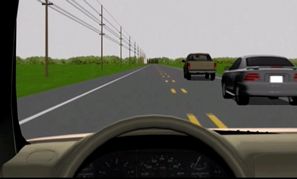 Blind Spots and the Passing Environment
Blind Spots and the Passing Environment
Avoid other car's blind spots. Obviously, the other driver can't see you, so stay in the blind spot as little as possible and drive up or drop back to where you can be seen. When you drive, look in the mirrors and determine your blind spots. Reflect on them when passing other vehicles. You can avoid collisions by letting other drivers know what you plan to do. Use your blinkers, flash your headlights and if necessary honk your horn to warn other driver's of your presence.
Having blind spots when driving can be a dangerous situation. Blind spots are areas of the road that can’t be seen in the rearview or side-view mirrors. These areas are especially dangerous as they can hide other vehicles and other objects that may be in the way. In order to drive safely, it is important to be aware of the passing environment and any potential blind spots.
- The first step in avoiding blind spots is to adjust the mirrors correctly. Make sure the rearview and side-view mirrors are positioned so that they provide the driver with the best view of the road. It is also important to check the mirrors periodically to ensure that they are still positioned correctly. This can help to ensure that any potential blind spots are visible.
- Another way to avoid blind spots is to turn and look when changing lanes. It is important to look over the shoulder to make sure that no other vehicles are in the way. This is especially important when passing or merging. Doing so can help to ensure that the driver is aware of the passing environment and any potential blind spots.
- Finally, it is important to be aware of the speed limit and other traffic laws. Driving too fast can make it difficult to spot potential blind spots. Additionally, it is important to be aware of the speed of other vehicles, as this can play a role in whether or not a blind spot is present.
Overall, it is important to be aware of blind spots and the passing environment when driving. This can help to ensure that drivers are aware of any potential hazards and can react accordingly. By adjusting the mirrors correctly, turning and looking when changing lanes, and being aware of the speed limit and other traffic laws, drivers can reduce the risk of accidents due to blind spots.
Evaluating the Traffic Environment Environment Comedy Class







 Blind Spots and the Passing Environment
Blind Spots and the Passing Environment







